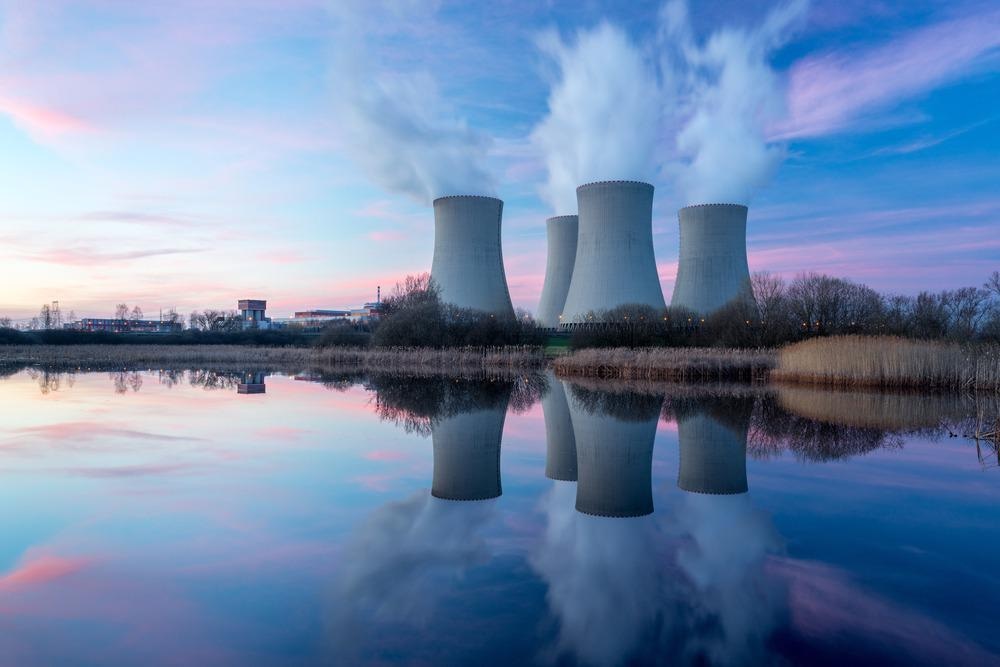With the fast expansion of nuclear technology, uranium (U(VI)) contamination of the aquatic system has become a serious health concern. A group of researchers employed an easy technique to manufacture MXene/graphene oxide nanocomposite (MGN) for eliminating U(VI) from water in a study published in the Chemical Engineering Journal.

Study: Design of MXene/graphene oxide nanocomposites with micro-wrinkle structure for efficient separating of uranium(VI) from wastewater. Image Credit: stockphoto-graf/Shutterstock.com
Based on their investigations, the researchers depicted that MGN might be a suitable absorber for extracting U(VI) from water. Moreover, they stated that the MGN preparation process might provide a novel approach to develop new high-efficiency U(VI) adsorbents.
U(VI) Pollution of Water Environment
Nuclear energy, renewable sources, wind turbines, photovoltaics, and other novel energy have all advanced quickly in the recent decade. Nuclear energy is particularly of interest because of its purity and ecological sustainability. However, with the usage of nuclear energy, environmental degradation of water resources produced by radioactive elements like uranium (U(VI)), has grown more significant.
Removing U(VI) from waste is thus critical for reducing U(VI) contamination in the water environment.
Limitations of Methods Utilized to Separate U(VI)
To date, a variety of procedures have been applied to eliminate and remove U(VI), involving evaporated reduction, electrochemical treatment, coagulate deposition, membrane filtration, adsorption, and chemical/biochemical reactive extraction.
The evaporated reduction technique and the extraction approach have poor water treatment efficiency, while the ion exchange process and the electrochemical treatment are expensive.
Secondary contamination is easily introduced using the coagulate deposition technique and the chemical/biochemical reactive precipitation approach. Although the membrane filtration technique is effective and simple to use, its life span is limited, and regeneration is challenging. Because of its cheap cost, the broad range of adsorbents, ease of handling, and recyclability, adsorption is the most extensively used approach for treating uranium-containing wastewater.
MXene as Suitable Material for U(VI) Separation
MXene, also known as Mn+1XnTm is produced by removing Al layers from Ti3AlC2. MXene's physical features, such as strong redox potential, high surface charge, and relatively high hydrophilicity, make it a suitable absorber for water contaminants, particularly for U(VI). To eliminate U(VI), some researchers have developed a multilayered MXene.
Environmental Instability of MXene
MXene is highly unstable in most environmental settings due to the total usage of revealed catalyst surface for adsorption, resulting in the unanticipated release of contaminants in the purification of treated wastewater, a complicated and fluctuating process. Furthermore, under the effect of Van der Waals' force, MXene nanosheets tend to agglomerate significantly.
Increasing MXene's stability in complex settings is vital to employ it in critical environmental adsorption applications.
Advantages of Mixing MXene with Graphene Oxide (GO)
Previous research has shown that by combining MXene with other materials to produce a nanocomposite, the deficiencies of MXene, namely point and face defects, may be substantially reduced.
To date, a variety of carbon nanomaterials, carbon nanofibers, and polymer compounds have been used to enhance MXene's adsorption ability. Graphene oxide (GO) has been researched extensively because of its physical features, including high hydrophilicity, large surface area, and strong binding capability, graphene oxide (GO) has been researched extensively.
At its surface, GO has a molecular structure that includes hydroxide ions (OH-) and epoxy (-COO-) groups. These oxygen-containing groups provide it with high hydrophilicity and water permanence, allowing it to diffuse in water to create a brown homogeneous dispersion.
The excellent dispersion of GO in water may be employed to increase the durability of MXene nanosheets in this environment and prevent them from aggregation.
Research Findings and Conclusion
In their research, the team has successfully created MXene/GO nanocomposites to eliminate U(VI) from wastewater. Micro-wrinkle nanostructures with large specific areas were seen in the as-prepared MGN. MGN demonstrated high U(VI) adsorption ability because of its micro-wrinkle morphology and high specific surface area. MGN's adsorption capacity for U(VI) was as large as 1003.5 mg-1, and its contact time for adsorbing U(VI) was around 60 minutes (298 K).
In the presence of contemporaneous ions, MGN's U(VI) adsorption efficiency could be sustained at a high level, with just a 6.2 percent reduction after eight cycles. MGN has potential application value in the area of U(VI) containing wastewater treatment based on these results.
Continue reading: Nanotechnology Initiatives in the Marine Industry.
Reference
Li, K. et al. (2022). Design of MXene/graphene oxide nanocomposites with micro-wrinkle structure for efficient separating of uranium(VI) from wastewater. Chemical Engineering Journal. Available at: https://www.sciencedirect.com/science/article/abs/pii/S1385894721060198
Disclaimer: The views expressed here are those of the author expressed in their private capacity and do not necessarily represent the views of AZoM.com Limited T/A AZoNetwork the owner and operator of this website. This disclaimer forms part of the Terms and conditions of use of this website.